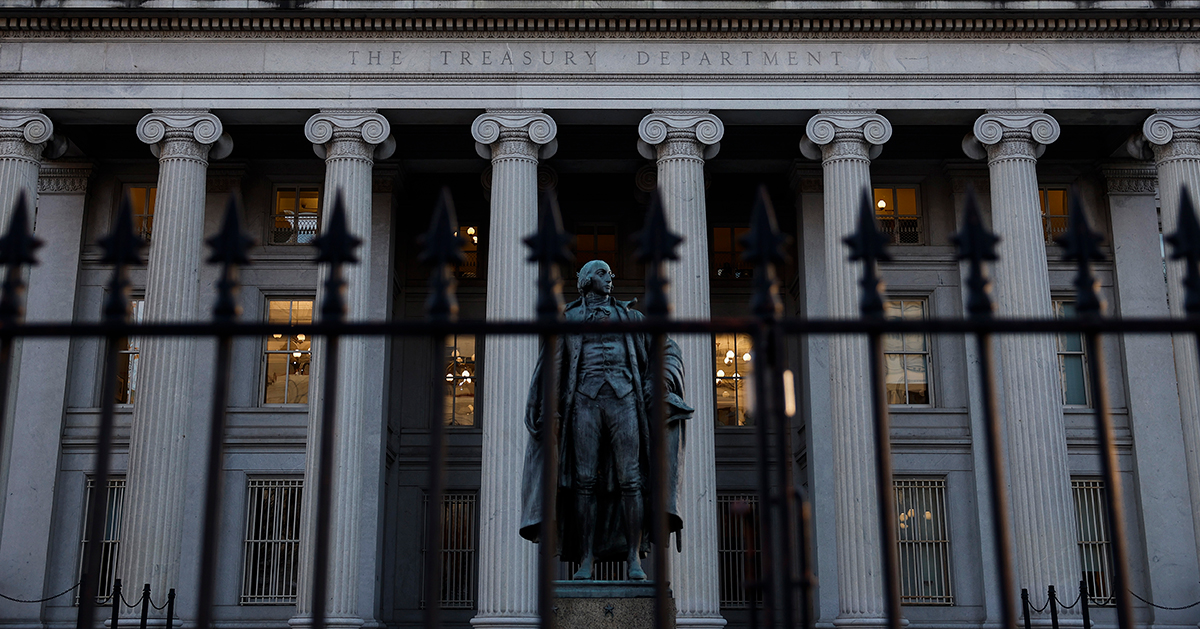You are here
Lifting the Debt Ceiling Has Been Paired with Budget Reform in the Past

The debt ceiling deadline is rapidly approaching. Instead of creating economic uncertainty and risking damage to the creditworthiness of the United States, lawmakers should focus on the underlying issue: the national debt itself. Let’s look at the state of play and opportunities for lawmakers in coming months.
The X Date Approaches
Earlier this year, the United States once again hit its debt ceiling, which is currently capped at $31.4 trillion. Now, the Treasury Department is using “extraordinary measures,” a series of accounting maneuvers to manage cash flows.
Extraordinary measures are a temporary Band-Aid, and we don’t know exactly how long they will last until we reach the “X date” — the time when the federal government can no longer fully meet its obligations. However, there is general agreement on a rough timeframe that gives us a sense of the urgency. The Congressional Budget Office, Bipartisan Policy Center, and the Department of the Treasury all agree that the X date is likely to fall between June and September.
The Underlying Issue: The National Debt Itself
Lawmakers should raise the debt ceiling before extraordinary measures are exhausted. Failing to do so would be a serious self-inflicted wound that risks the full faith and credit of the United States, with potentially severe consequences for our economy, our fiscal outlook and our standing in the world.
At the same time, it’s also important to focus on the underlying reason we keep hitting the ceiling in the first place. By any definition, we’re on an unsustainable fiscal path. In just the next decade, the national debt will reach its highest point in history relative to GDP, the annual deficit will rise to nearly $3 trillion and interest costs on the debt will total $10.5 trillion.
Divided government means lawmakers have both an opportunity and requirement to work together on our toughest challenges and essential fiscal responsibilities. As noted by the Committee for a Responsible Federal Budget, recent history provides a number of examples where lawmakers have paired a debt ceiling increase with fiscal reforms aimed at improving our debt outlook. These reforms have included significant deficit reduction, key fiscal discipline rules like PAYGO, and budget process reforms.
Key examples of legislation to raise or suspend the debt ceiling paired with fiscal reforms include:
- Balanced Budget and Emergency Deficit Control Act of 1985, which set targets for a balanced budget by 1991.
- Omnibus Reconciliation Act of 1990 which included nearly $500 billion in deficit reduction over five years, statutory PAYGO, and spending caps.
- Statutory Pay-As-You-Go Act of 2010 which reinstated statutory PAYGO, informally leading to Simpson-Bowles fiscal commission.
- Budget Control Act of 2011 which included $917 billion in deficit reduction over ten years and established the “Super Committee.”
In 2023, there are no shortage of options on the revenue and spending side for lawmakers to consider, as well as a range of potential legislation to reform the budget process with bipartisan, bicameral support, including:
- The TRUST Act, which sets up a structured process for proposing solutions to shortfalls in key programs such as Social Security and Medicare.
- The Responsible Budgeting Act, which incorporates specific debt reduction targets into a budget resolution.
- The Sustainable Budget Act, which creates a fiscal commission aimed at achieving primary budget balance within a decade.
Conclusion
The urgency to deal with the debt ceiling is high, but so is the need to address our fiscal outlook. As the debt ceiling deadline approaches, lawmakers have plenty of options available to avoid near-term economic damage, and help build a stronger, more sustainable fiscal foundation for the future by addressing the underlying issue of the debt itself.
Related: Top 10 Reasons Why The National Debt Matters
